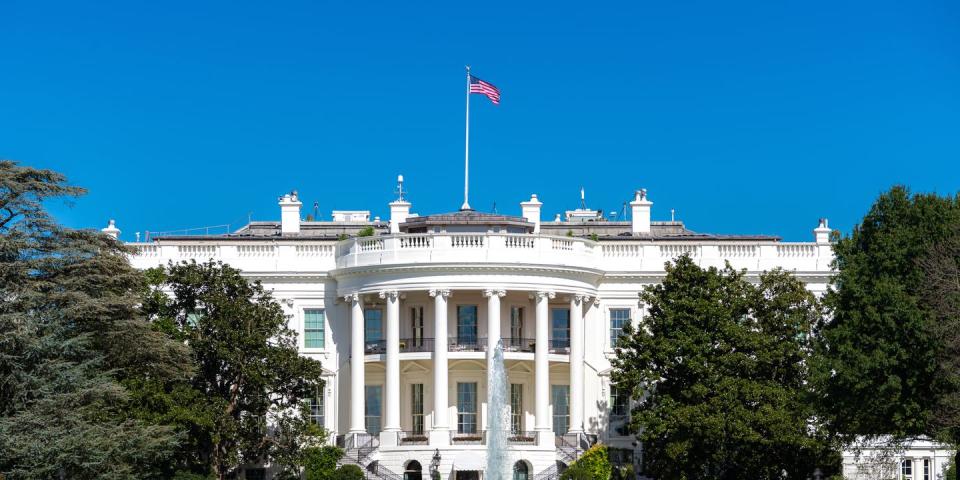Presidents Have Just 5 Hours to Move Into the White House—Here's How It Works

Today, Joe Biden took the oath of office at the United States Capitol, making him the 46th President of the United States. This, of course, means that Biden will now live at the White House for at least the next four years. But his move-in is anything but standard: Due to the complicated nature of switching administrations, White House move-ins must take place in just a few hours, under intense security scrutiny and, this year, amidst new concerns about cleanliness.
Moving from one residence to another is no easy feat—and that is especially true if you’re moving into the White House, which encompasses over 54,000 square feet and is a tangible piece of United States history. Technically, White House staff is not allowed to begin moving the new family in until the president is officially sworn in, making for an awkward interim period where belongings are housed in storage units and on trucks before they can be unloaded into the White House.
Michael S. Smith, who designed the interiors of the Obama-era White House, shared more of what the historic move-in day entails in his recent book, Designing History: The Extraordinary Art & Style of the Obama White House.
On this day 12 years ago, then-President Barack Obama—along with his family—moved into the White House, mere hours after making history as the first African American to hold this esteemed position. But it wasn’t until 11 a.m. on inauguration day that Smith and his team were allowed access to the People’s House—and the entire move-in process had to be completed by 3:30 p.m. for the new First Family to return to the residence.
This year, that expedited process is made even more complicated by the need for thorough sanitizing and social distancing protocols—all of which make moving into any home (let alone the most securely-guarded one in the country) more difficult. Additionally, given that Donald and Melania Trump eschewed the tradition of inviting the incoming First Family for a tour of the White House pre-inauguration, it's unlikely Biden's team was given any extra wiggle room with move-in timing and planning. The New York Times reports that some Biden advisers even cautioned the new First Family against moving into 1600 Pennsylvania Avenue tonight, urging them instead to stay at Blair House until their new home was properly cleaned and renovated (though a White House spokesperson assured the outlet that all family spaces were adequately sanitized).

Though the tight timetable would make many designers balk, what really took Smith by surprise, he recalls, was the monumental scale of many of the White House rooms—scale which the designer didn't fully absorb until entering the White House for the first time. Smith recently told Veranda, “The incredible scale of the White House rooms really hit home as soon as I walked in. Over the years, I've decorated some monumental houses for clients, but this was different.”
The trick to decorating the People’s House for the new first family, according to Smith, was to make it feel more like a home. In order to make such an extraordinary dwelling feel like a home within just a few hours, Smith enlisted the help of furnishings such as “colorful lamps, a variety of pillows, cashmere throws, books, and a few of their personal items to make the private quarters feel more personal to them.”

Considering the pressure that would likely only intensify once inauguration day arrived, there was a brief moment when Smith contemplated making an impulsive decision: sleeping on the White House basement floor the night before the inauguration, to ensure that the move-in process could begin as soon as possible. Smith ultimately realized this sleepover of sorts was not ideal, and instead stayed at the nearby Hay-Adams hotel—which, as it happens, was also where Bill Clinton stayed prior to his own inauguration day in 1993.
That said, a White House sleepover wouldn't be unheard-of: “The staff is sleeping on cots, in stairwells,” Anita McBride, who served as chief of staff to Laura Bush during the 2009 inauguration, told The New York Times. No matter how prepared they are, she said, “it’s always chaotic.”
Ultimately, move-in day at the White House may be different from our own moving experiences (after all, we thought moving in and out of a college dorm was hard), but in the end, the process is well worth it—because, as the House Beautiful mantra aptly states, life begins at home.
Follow House Beautiful on Instagram.
You Might Also Like

